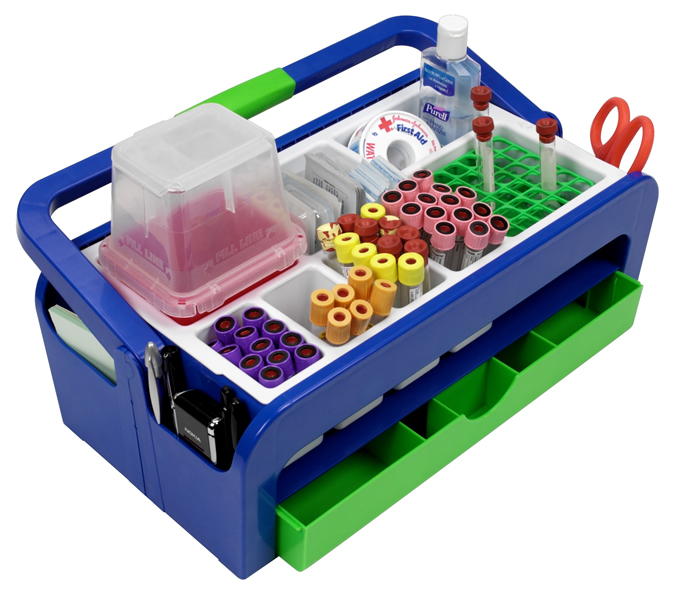Essential Phlebotomist Equipment: The Ultimate Guide to Blood Draw Tools and Supplies
If you’re a budding phlebotomist or a seasoned healthcare professional looking to refresh your knowledge, understanding the essential equipment needed for blood draws is crucial. Proper tools not only ensure patient safety and comfort but also improve the accuracy and efficiency of blood collection procedures. In this complete guide, we’ll explore blood draw tools and supplies, their importance, practical tips for use, and insights into maintaining a safe and effective phlebotomy practice.
What is the Role of Equipment in Phlebotomy?
Phlebotomy, the process of drawing blood for testing, diagnosis, or donation, relies heavily on the right equipment. Correct use of blood draw tools minimizes patient discomfort and reduces the risk of complications like hematomas or infections. The right supplies also streamline the procedure,making it quicker and safer for both the healthcare worker and the patient.
Key Categories of Blood Draw Tools and Supplies
- Needles and Syringes
- vacutainer Systems
- Blood Collection Tubes
- Tourniquets
- Alcohol Swabs
- Bandages and Gauze
- Gloves and Personal Protective Equipment (PPE)
- Sharps Containers
Essential Blood Draw tools
needles and Syringes
Safe and efficient blood collection starts with choosing the right needles and syringes. They are available in various sizes, typically ranging from 21-gauge to 23-gauge for routine blood draws. The needle gauge influences the pain level and success rate of the procedure.
- Needle gauge: Smaller gauge numbers (such as 21G) indicate larger needles and vice versa.
- Syringes: Generally used for manual blood draws or when a controlled withdrawal is necessary.
- Key tip: Always select needles in sterile, pre-packaged packages and dispose of used needles promptly into sharps containers.
Vacutainer systems
The Vacutainer system is the most widely used method for blood collection, offering a safe and sterile way to draw and store blood samples.
| Component | Purpose | Key Benefits |
|---|---|---|
| Vacutainer needle | Connects to the evacuated tube | Secure, sterile connection |
| Evacuated tubes | Blood collection & storage | Multiple samples easily collected |
| Holder and adapter | Facilitates needle and tube attachment | Ease of use and safety |
Blood Collection Tubes
Available in various types depending on the test requirements, these tubes are designed for specific additives and clot activators:
- No additive tubes: For serum tests
- EDTA tubes: For hematology tests
- Lithium heparin tubes: For plasma studies
Tourniquets
The tourniquet is used to constrict blood flow temporarily, making veins more visible and accessible. They are typically made of latex or foam and should be applied snugly but not too tight.
- material: Latex or latex-free options for sensitive patients
- Duration: limit to 1 minute to prevent hemoconcentration
Additional Blood Draw Supplies
essential Items for a Smooth Blood Draw
- Alcohol Swabs: For skin disinfection
- Gauze Pads and Bandages: To control bleeding post-draw
- gloves and PPE: To ensure safety and prevent contamination
- Sharps Containers: For disposing of used needles safely
Practical Tips for Safe and Effective Blood Collection
- Patient Comfort: Always verify the patient’s identity and explain the procedure.
- Proper Technique: Use the appropriate needle size and stabilized hand positioning.
- Minimize Discomfort: Select the optimal vein and apply adequate tourniquet pressure.
- Safety First: Dispose of sharps immediately into approved sharps containers.
- Equipment Maintenance: Regularly inspect and replace supplies to ensure sterility and effectiveness.
Benefits of Using The Right Equipment
- Patient Safety: Reduces risk of infections, hematomas, and injury.
- Sample Integrity: Ensures accurate test results by avoiding contamination or hemolysis.
- Efficiency: Speeds up the blood draw process, saving time and reducing patient stress.
- professionalism: Demonstrates competence and care, promoting patient trust.
Case Study: Enhancing Phlebotomy Efficiency with Proper Equipment
A regional blood donation center experienced a 15% reduction in sample contamination and a 10% faster collection rate after standardizing their blood draw supplies. Incorporating high-quality evacuated tubes, ergonomic tourniquets, and well-trained staff on equipment use contributed to improved outcomes.This highlights how investing in the right phlebotomy equipment directly impacts patient care quality.
First-Hand Experience: The Power of Proper Equipment
As a seasoned phlebotomist, I can attest that having the right tools makes all the difference. From choosing the appropriate needle gauge to ensuring the blood collection tubes are correctly labeled and stored, each element contributes to a successful blood draw experience. Proper PPE and safety measures protect both the patient and the clinician, creating a clinical environment built on trust and safety.
Conclusion
Mastering the art of blood collection begins with understanding and utilizing essential phlebotomist equipment. From high-quality needles and blood collection tubes to safe sharps disposal and PPE, each supply plays a vital role in ensuring safe, efficient, and patient-centered blood draws. By staying informed about the latest tools and best practices, healthcare professionals can improve outcomes, enhance safety, and provide a comfortable experience for every patient. Continuous education and equipment maintenance are key to maintaining excellence in phlebotomy practice.
If you’re looking to upgrade your phlebotomy supplies or need guidance on choosing the right tools, contact our expert team today. Ensuring you have the right blood draw tools is the first step toward better patient care and professional success.
